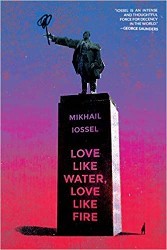The photographs of survivors being liberated from the German concentration camps at the end of World War II have become part of our shared consciousness and the basis of our collective memory of the Holocaust.
In this volume, David Shneer traces the complex biography of a different but equally shocking photograph that he considers to be one of the first widely circulating Holocaust liberation photographs. The image was taken in January 1942, some three years before the end of the war “on a frozen landscape outside Kerch, a port city on the Crimean peninsula, after the Red Army forced the occupying German Army, the Wehrmacht, to retreat from the city.”
Just before they left, in an action that took them three days, the Einsatzkommando rounded up the estimated 7,000 Jewish inhabitants of the town — men, women, children, babies and old people — and machine-gunned them to death in a deep trench eight kilometers from Kerch near a village called Bagerovo. As their final act, they also shot and killed non-Jewish Soviet partisans and prisoners of war, but in their haste to leave they left these bodies lying out in the open in pools of blood across a frozen field.
Dmitri Baltermants, a Jewish photojournalist working for the Soviet newspaper Izvestia, took a series of photographs of the full scale of the horror he encountered, but it was Grief, a photograph that focused on a non-Jewish woman, P. Ivanova, devastated at the discovery of her non-Jewish husband’s dead body that came to represent this mass killing. At first the image was used in the USSR to document the atrocities that were carried out by German fascists against peaceful Soviet civilians, and then later it was used to represent the universal horror of war. This, rather than the story of the ideologically-driven Nazi mass murder of Jews. That story — until twenty first century exhibition curators began to return the iconic photograph to its historical context — lay hidden for decades in the trench in the background of the photograph.
David Shneer tracks the compelling afterlife of this photograph through almost eight decades, telling the story of how a powerful communist anti-war photograph that had been used for political purposes over many decades evolved into a capitalist art commodity for commercial use. In so doing, he also tells us about Soviet-era aesthetics, World War II, Holocaust memory, the Cold War, and how the contemporary art market produces and creates value.
Grief: The Biography of a Holocaust Photograph is an important, lucid, and thoughtful engagement at the intersection of history, politics, and visual culture that significantly contributes to our understanding of photography as nothing more or less than evidence and material for interpretation. We come to see how an image has the power to resonate beyond its moment of capture in much broader public and political spheres, and that at any time can be spirited out of its place in the world to act and make meaning in many other contexts.
Terry Kurgan is an artist and writer based in Johannesburg. Her work frequently explores the medium of photography. Her recent book Everyone is Present won the 2019 Alan Paton Award (South Africa), was selected as a finalist for the 2019 National Jewish Book Awards (USA), and was shortlisted for the 2019 Photo Arles Book Prize (France).





